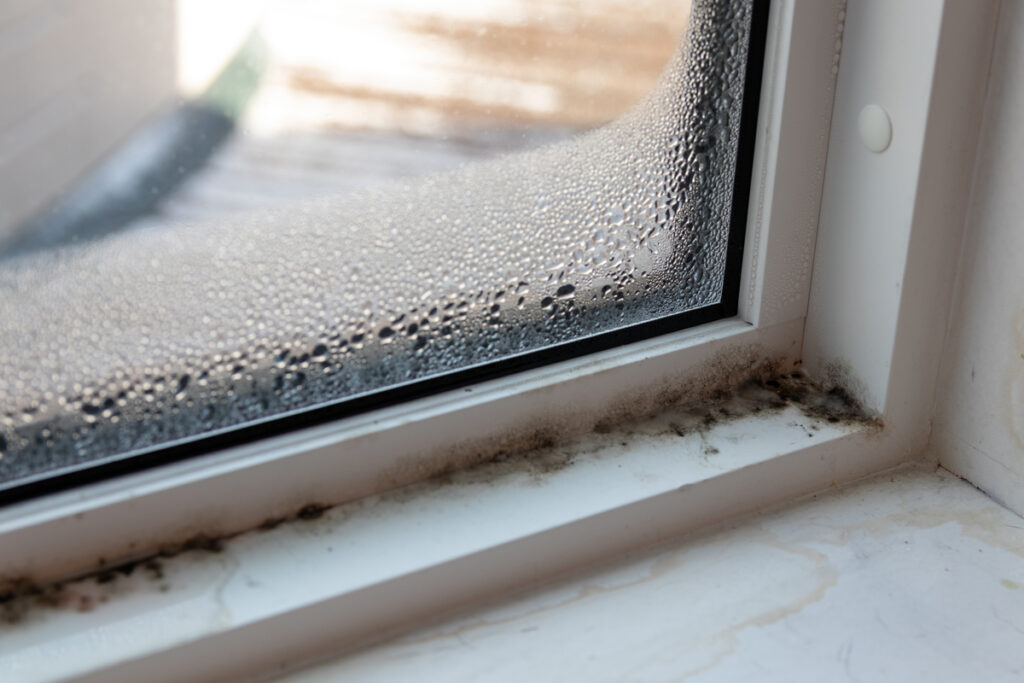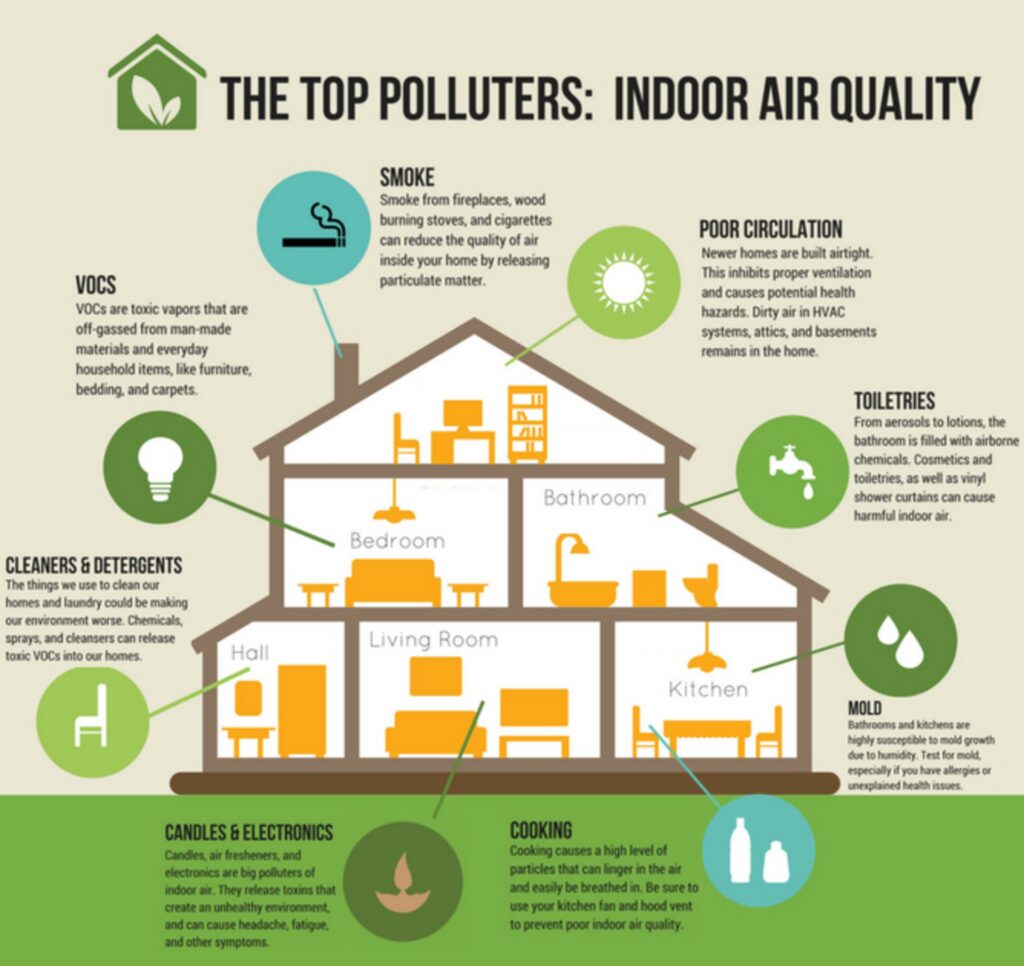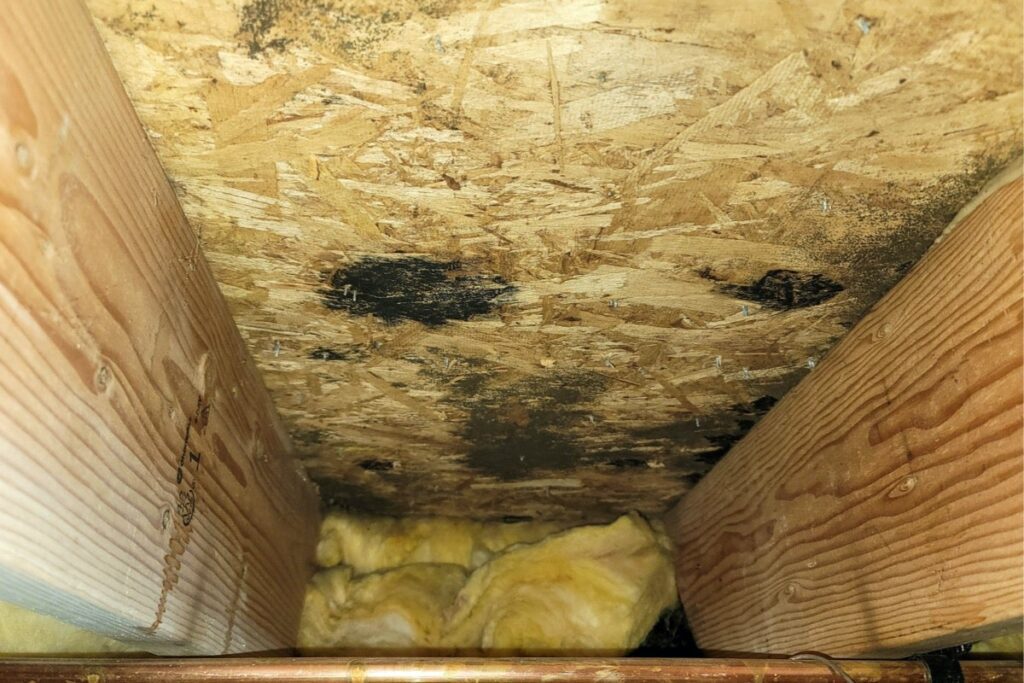Do you ever wonder about the quality of the air you breathe in your home? Indoor air pollution is a common problem that can affect your health and well-being. With natural air purification methods, you can improve your indoor air quality and breathe easy. In this section, we’ll explore eco-friendly solutions and DIY techniques to help you purify your room air naturally.
Key Takeaways:
- Improving indoor air quality is essential for your overall health and well-being.
- Natural air purification methods can help reduce indoor air pollution.
- You can use eco-friendly solutions and DIY techniques to purify your room air naturally.
Understanding Indoor Air Quality
When it comes to purifying the air in your home, it’s important to understand the concept of indoor air quality (IAQ). IAQ refers to the level of pollutants and allergens found in the air inside your living space. Poor IAQ can cause a range of health problems, including headaches, allergies, and respiratory issues.
Common sources of indoor air pollution include chemicals from cleaning products, smoke from cigarettes or fireplaces, and even pet dander. Fortunately, there are natural ways to improve IAQ and reduce the risk of health problems.
One of the most effective and eco-friendly indoor air purification techniques is to increase the flow of fresh air into your home. This can be achieved by opening windows and doors, or by using fans and ventilation systems.


Other natural ways to improve IAQ include the use of air-cleaning plants, DIY air purifiers, and humidity control. By adopting these natural air purification methods, you can breathe easy and enjoy a healthier living environment.
Eliminating Chemical Pollutants
Natural air purification methods are effective in reducing chemical pollutants in your indoor air. Many common household cleaning products contain harsh chemicals that can negatively affect your health. To combat this, try using natural alternatives, such as essential oils and vinegar, for air purification.
Essential oils: Essential oils, such as lavender, tea tree, and eucalyptus, have antibacterial and antifungal properties that can effectively purify the air. Simply add a few drops of your favorite essential oil to a diffuser or mix with water in a spray bottle and mist throughout your home.
Vinegar: Vinegar is a popular natural cleaning solution that can also assist with air purification. To use vinegar as an air freshener, mix equal parts water and vinegar, and add a few drops of your preferred essential oil for added fragrance. Transfer the mixture to a spray bottle and use it to freshen your air.
Reducing chemical pollutants in your indoor air can significantly improve air quality and promote a healthier home environment. Try incorporating these natural air purification methods into your routine for a more eco-friendly and effective solution.


The Power of Plants
If you’re looking for natural air cleaning solutions, plants are a great option. Certain plants have the ability to purify the air by removing toxins and producing oxygen. Not only do they contribute to a cleaner and fresher environment, but they also add a touch of greenery to your space.
Some of the most popular air-purifying plants include spider plants, peace lilies, and snake plants. Spider plants are great for removing formaldehyde, while peace lilies can eliminate common air pollutants like benzene and ammonia. Snake plants, also known as mother-in-law’s tongue, are effective at removing toxins like formaldehyde and xylene.
You can easily incorporate these plants into your living space by placing them on a windowsill, in hanging planters, or on a desk. Make sure to research proper care for each plant, as they may have different sunlight and watering needs.
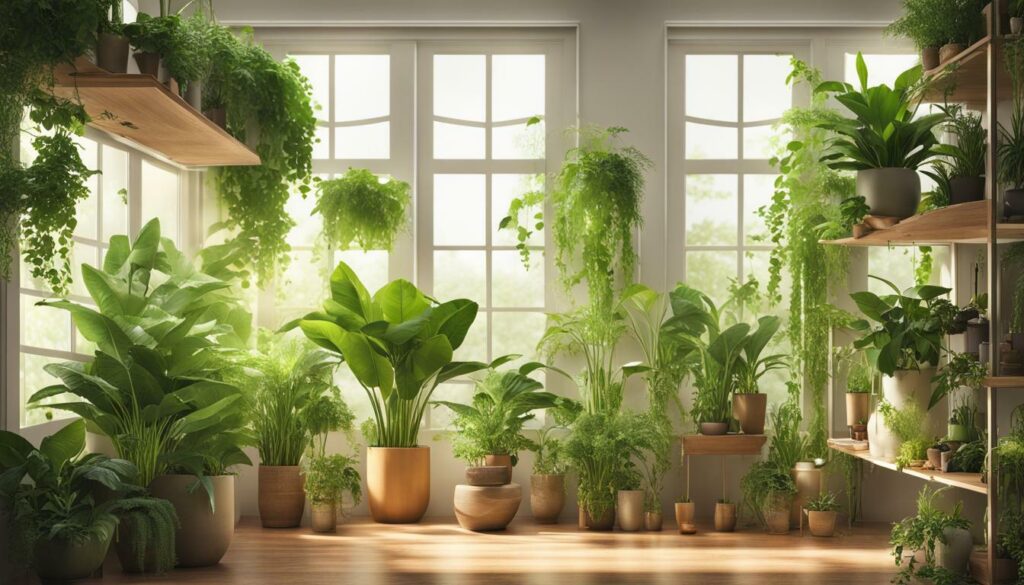

Not only do plants improve air quality, but they also have positive psychological effects. Studies have shown that being around greenery can reduce stress and improve mood.
So, if you’re looking for natural air purification methods, consider adding some plants to your home. They not only help clean the air but also add beauty and a sense of calm to your living environment.
DIY Room Air Purifiers
If you’re looking for a cost-effective and eco-friendly way to improve your indoor air quality, consider making your own air purifier. DIY room air purifiers are easy to make and require only a few simple materials. Not only are they effective at removing airborne pollutants, but they can also be customized to fit your decor.
One of the simplest DIY air purifiers involves using activated charcoal and a fan. Activated charcoal is porous and absorbs impurities in the air, making it a great air filter. To create your own air purifier, you’ll need a box fan, some activated charcoal, and a few furnace filters. Simply place a layer of activated charcoal on the furnace filter and attach it to the back of the fan. The fan will draw air through the filter, trapping pollutants and releasing clean air back into the room.
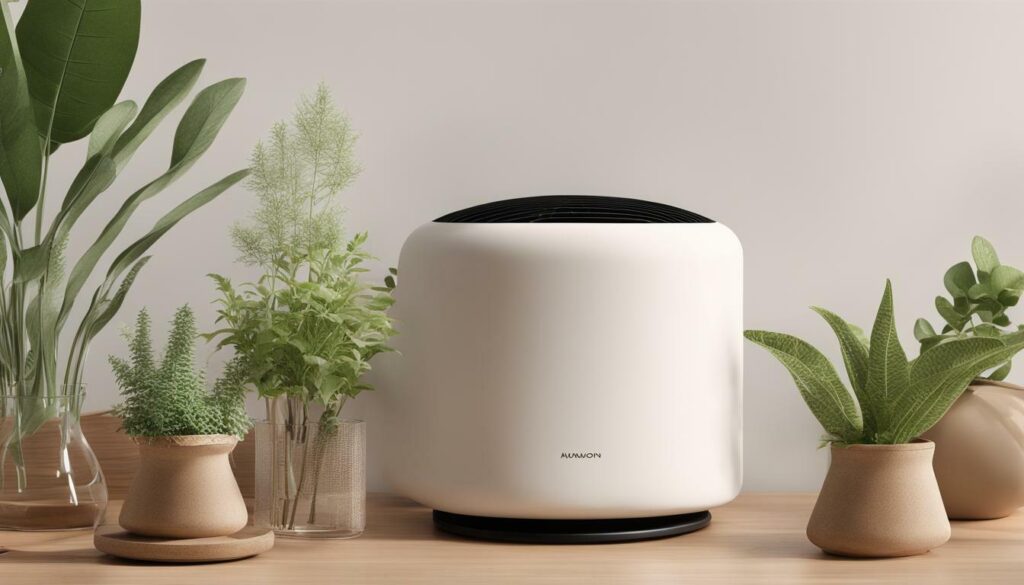

Another option is to use baking soda as a natural air purifier. Baking soda is a common household item that is known for its ability to absorb odors. To use it as an air purifier, place an open box of baking soda in a room. The baking soda will absorb pollutants and leave your room smelling fresh.
Creating your own air purifier is a simple and effective way to improve the air quality in your home. Not only are these DIY purifiers easy to make, but they are also affordable and eco-friendly. So, why not give it a try and breathe easier today?
Enhancing Ventilation
Proper ventilation is crucial for maintaining clean air in your home. It helps to remove pollutants and odors while bringing in fresh air. One simple way to improve ventilation is by opening windows and doors, especially during mild weather. This can help to circulate air and reduce the concentration of pollutants indoors.
If you have an exhaust fan in your kitchen or bathroom, make sure to use it while cooking or showering to remove excess steam and moisture. You can also install a ventilation system to improve air exchange between indoor and outdoor spaces. Cross-ventilation can further enhance the movement of air, so consider opening windows on opposite sides of your home.
Having plants in your home can also contribute to better air quality by absorbing carbon dioxide and emitting oxygen. They can also help to remove pollutants and increase humidity levels. However, keep in mind that some plants can produce allergens or mold, so choose non-toxic varieties and maintain proper care.


Another effective method for enhancing ventilation is by using fans or air purifiers. These devices can help to circulate air and filter out pollutants. Portable air purifiers are especially effective in removing harmful particles from your indoor air. Just make sure to choose one with a HEPA filter, which is designed to capture tiny particles.
You can also use natural air purification methods like bamboo charcoal or activated charcoal bags. These bags can be placed strategically throughout your home to absorb and neutralize pollutants and odors.
By using these natural air purification methods and following these indoor air purification techniques, you can enjoy a clean and fresh living environment.
Keeping a Clean Environment
To minimize indoor air pollutants, it’s essential to keep a clean living environment. Dust, dirt, and pet dander can accumulate on surfaces and contribute to poor indoor air quality. Here are a few tips for purifying room air naturally:
- Dust surfaces regularly with a damp cloth or microfiber cloth to trap and remove allergens.
- Vacuum carpets and rugs weekly with a HEPA filter to trap small particles and dust mites.
- Mop hard floors with a natural cleaner or DIY solution to remove dirt and bacteria.
Using natural cleaning products or homemade solutions can also reduce the amount of chemicals in the air. For example, vinegar and baking soda can be used to clean surfaces and neutralize odors. Avoid harsh cleaning products that contain synthetic fragrances or toxic chemicals.
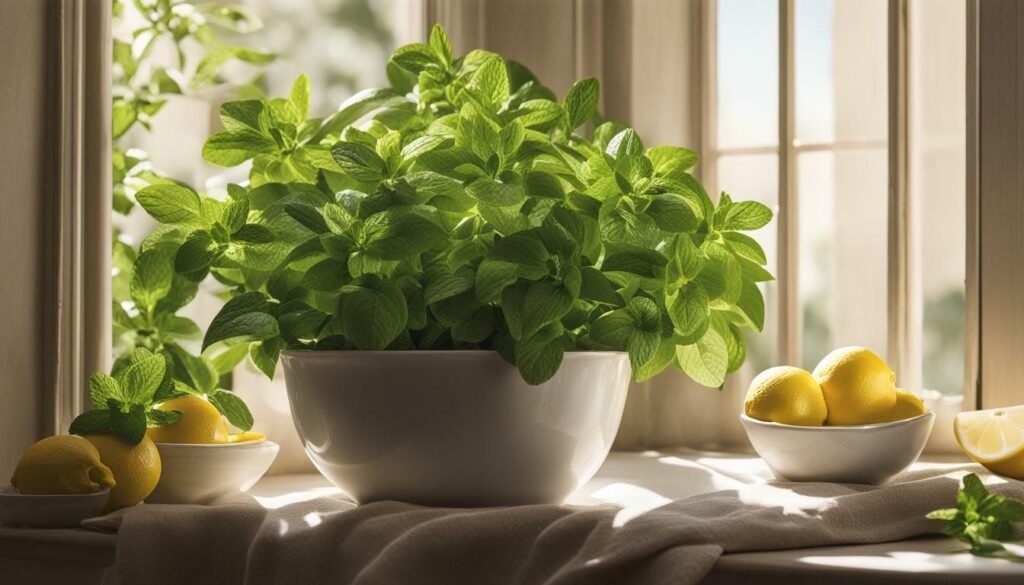

Humidity Control
Controlling the humidity levels in your home can drastically improve indoor air quality. High humidity can lead to mold growth and worsen allergies, while low humidity can cause dry skin and respiratory issues. Fortunately, there are natural ways to regulate humidity levels without relying on energy-consuming appliances.
Plants are an effective and eco-friendly solution for controlling humidity. They release moisture through a process called transpiration, which can increase humidity levels in dry environments. Consider adding humidity-loving plants like peace lilies or ferns to your space to naturally regulate humidity.
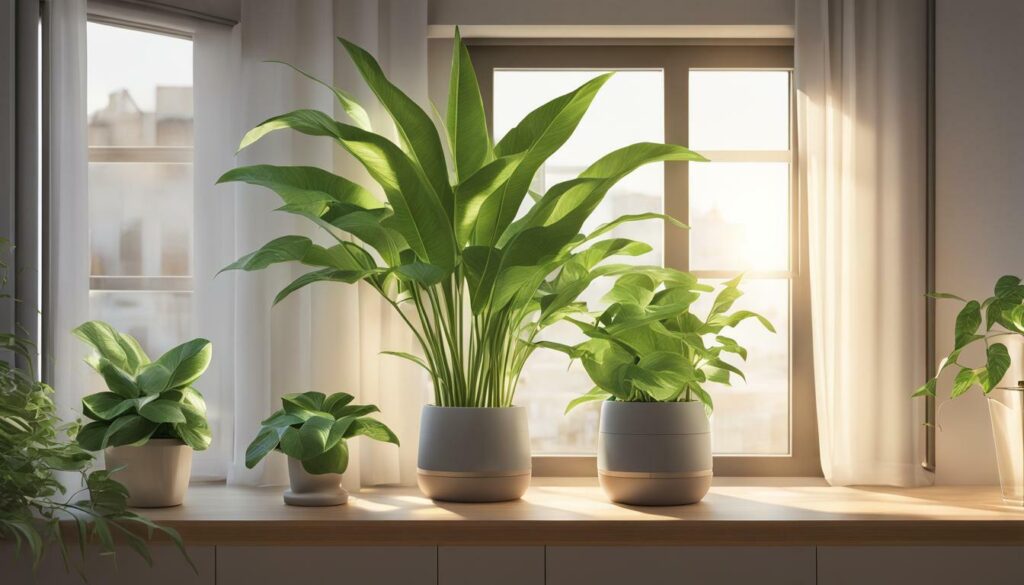

If you live in a humid area, using a dehumidifier can help reduce moisture levels in the air. However, instead of relying on energy-consuming appliances, try using natural desiccants like bamboo charcoal or silica gel. These natural materials absorb excess moisture in the air, effectively reducing humidity levels.
By regulating humidity levels in your home, you can improve indoor air quality and promote a healthier living environment.
Filtering with Natural Materials
Did you know that certain natural materials can act as effective air filters in your home? Activated charcoal, bamboo charcoal, and zeolite have all been shown to absorb and neutralize odors, chemicals, and allergens.
Activated charcoal is a highly porous material that attracts and traps toxins and impurities from the air. Bamboo charcoal is a type of activated charcoal that’s especially effective at dehumidifying and purifying the air. Zeolite is a mineral that naturally absorbs volatile organic compounds (VOCs) and other pollutants from the air.
You can use these natural materials to create your own DIY room air purifiers. One simple method is to place small bags of activated charcoal or bamboo charcoal around your home to absorb contaminants. You can also create a more elaborate system using a fan and a filter made of these materials.
To make your own air filter, simply attach a layer of activated or bamboo charcoal to a fan using wire mesh or adhesive tape. For zeolite, you can create a filter by placing the mineral inside a mesh bag or pantyhose and attaching it to the fan.
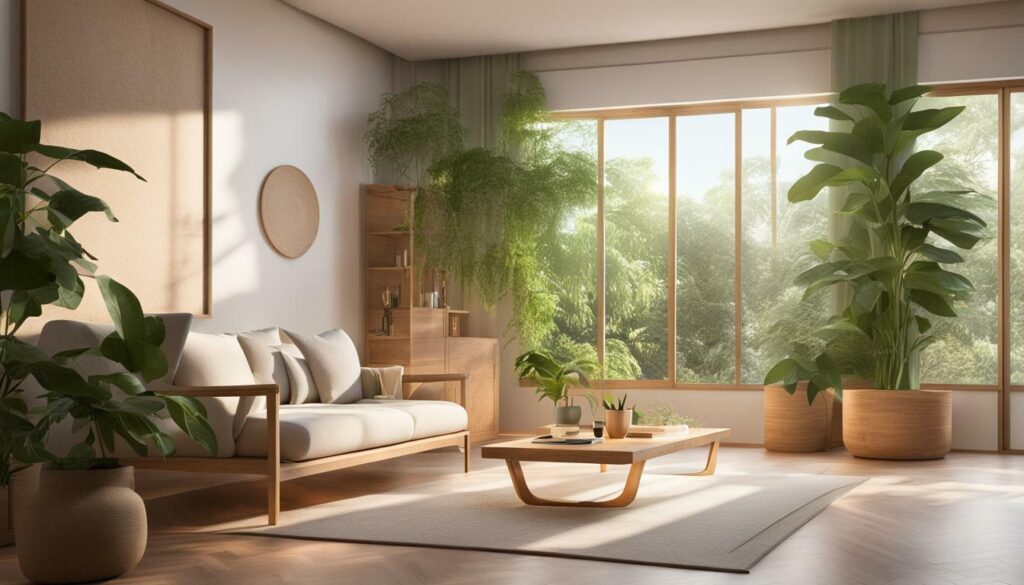

These DIY methods are a cost-effective and eco-friendly way to purify your indoor air. You can experiment with different combinations of natural materials to find the best solution for your home.
Natural Air Fresheners
When it comes to maintaining clean indoor air, natural air fresheners can offer a wonderful alternative to chemical products. Not only are they cheaper, but they also contain fewer harmful toxins that can impact your health. Here are some natural air fresheners you can use to purify your room air:
- Citrus fruits: Lemons, limes, and oranges are great natural air fresheners. Slice them up and place them in a bowl or use the peels to create a homemade potpourri.
- Herbs: Fresh herbs like mint, rosemary, and basil can give your room a fresh, clean scent. Hang them in a mesh bag in your closet or place them in a vase to enjoy their aroma.
- Essential oils: Essential oils like lavender, eucalyptus, and tea tree oil are known for their air-purifying properties. Add a few drops to a diffuser or spray bottle filled with water for a quick and easy air freshener.
Using these natural air fresheners not only freshens up your indoor air, they also improve the air quality around you. Try incorporating them into your home and feel the difference!
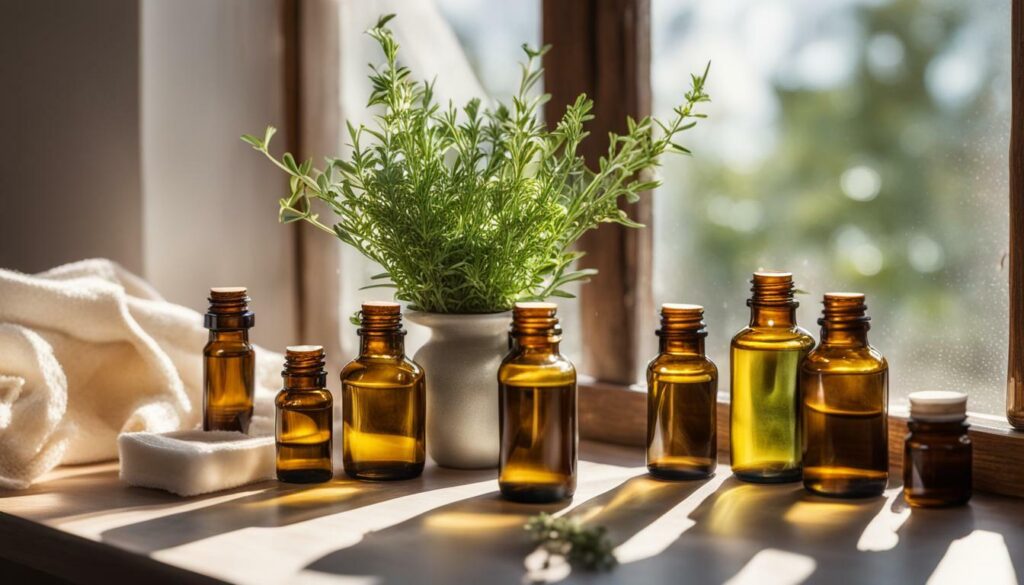

Natural air fresheners are a great way to purify your indoor air!
Tips for Purifying Room Air Naturally and Improving Indoor Air Quality
Congratulations! By reading this article, you’re taking the first step to breathing cleaner air at home. Creating a natural and healthy indoor environment should be a top priority, and luckily, it’s easier than you might think. Here are some tips for purifying your room air naturally and improving your indoor air quality:
- Regularly clean and dust your home to minimize indoor air pollutants.
- Use natural cleaning products or DIY solutions to avoid harsh chemicals.
- Open windows and use exhaust fans to improve air circulation and ventilation.
- Use air-purifying plants like spider plants, peace lilies, and snake plants to naturally remove toxins from the air.
- Create a DIY air purifier using materials like activated charcoal and baking soda.
- Maintain optimal humidity levels by using plants or humidifiers.
- Filter the air with natural materials like activated charcoal and bamboo charcoal.
- Use natural air fresheners like herbs and essential oils instead of commercial air fresheners.
Implementing these tips can lead to significant improvements in your indoor air quality and ultimately, your overall well-being. By reducing your exposure to indoor air pollutants, you can breathe easy and live comfortably in your own home. Keep these tips in mind and enjoy a natural and healthy living environment!
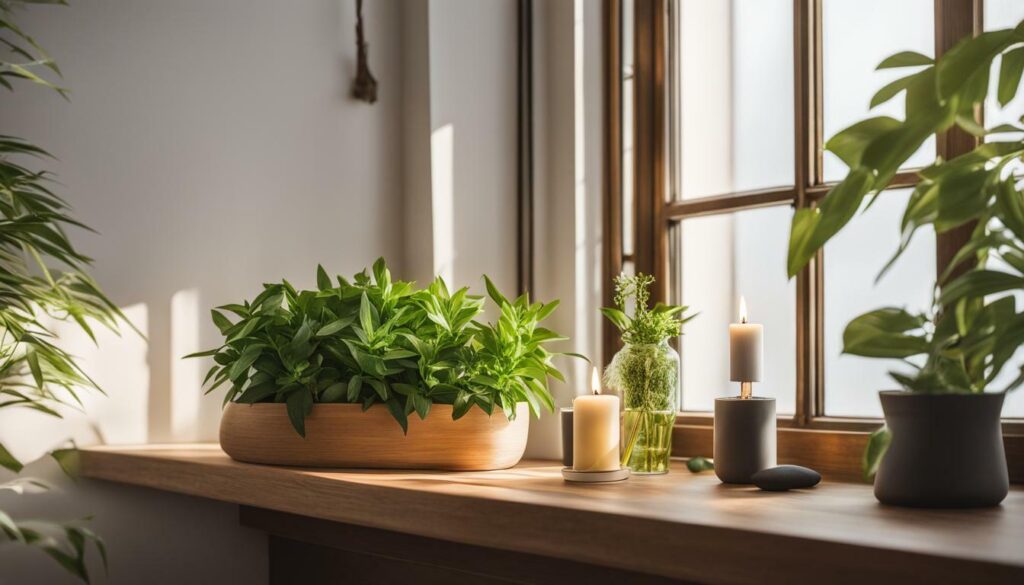

Conclusion
Congratulations! You are now equipped with several eco-friendly and affordable natural air purification methods to keep the air in your home clean. By utilizing these methods, you not only improve your indoor air quality but also promote a healthier living environment for you and your loved ones.
From eliminating chemical pollutants to incorporating air-purifying plants and DIY air purifiers, there are many ways to ensure that your home’s air stays fresh and pure. Remember to maintain proper ventilation, humidity levels, and cleanliness for maximum effectiveness.
By avoiding harsh chemicals and using natural materials like essential oils and activated charcoal, you can easily create your very own home remedies for air purification. These methods are not only effective in removing harmful pollutants, but they are also affordable and easy to implement.
Start breathing easier today!
FAQ
Q: How can I purify my room air naturally?
A: There are several natural air purification methods you can try. Some options include using air-purifying plants, creating DIY room air purifiers, enhancing ventilation, keeping a clean environment, controlling humidity, filtering with natural materials, and using natural air fresheners.
Q: What are some tips for purifying room air naturally?
A: Here are some tips for purifying room air naturally: avoid harsh cleaning products and opt for natural alternatives, incorporate air-purifying plants like spider plants and peace lilies into your space, create DIY room air purifiers using activated charcoal and baking soda, improve ventilation by opening windows and using exhaust fans, regularly dust, vacuum, and mop to remove allergens, maintain optimal humidity levels with the help of plants and humidifiers, use natural materials like activated charcoal to filter air, and freshen your space with natural air fresheners like citrus fruits and essential oils.
Q: What are indoor air purification techniques?
A: Indoor air purification techniques refer to methods used to improve indoor air quality. These techniques may include using air purifiers, ventilating the space, eliminating sources of air pollution, and incorporating natural air purification methods such as those mentioned above.
Q: How can I improve indoor air quality naturally?
A: To improve indoor air quality naturally, you can follow several methods, including using air-purifying plants, creating DIY room air purifiers, enhancing ventilation, keeping a clean environment, controlling humidity, filtering air with natural materials, and using natural air fresheners.
Q: What are some home remedies for air purification?
A: Home remedies for air purification include using air-purifying plants, creating DIY room air purifiers, improving ventilation, keeping a clean environment, controlling humidity, filtering air with natural materials, and using natural air fresheners.
Q: What plants can purify room air?
A: There are several air-purifying plants that can help purify room air. Some popular options include spider plants, peace lilies, and snake plants.
Q: How can I create a DIY room air purifier?
A: You can create a DIY room air purifier using materials like activated charcoal, baking soda, and a fan. Simply place the activated charcoal and baking soda in a container, position the fan to blow air through the mixture, and let the purifier do its job.


